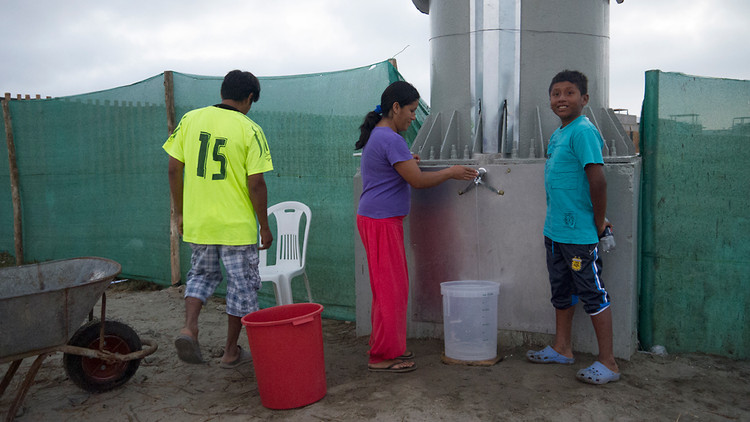Did the University of Engineering and Design (UTEC) in Lima, Peru just change humanitarian efforts and the marketing process forever? It’s surprising that a university dedicated to innovation would use a billboard to attract talented students when the possibilities of social marketing and interactive design would probably do it way more justice. UTEC sure doesn’t agree, and for this matter we’re glad they moved forward with their billboard-based campaign.
The idea was simple: utilize a billboard to advertise the school’s curriculum and in the process showcase the possibilities of engineering. In a true creative process, the university created a billboard that generates water out of thin air. Located in the coastal desert region of Peru where it rarely rains, there’s a lack of potable water and humidity can climb to 98%, so Lima proved to be the perfect spot for such a creation.

Rooted in the idea of the impossible is possible, the billboard transforms Lima’s humid air into purified water by capturing it through five generators and processing the air through a reverse osmosis system. Once cycled through, the water is transferred to a tank that can store 100 liters of water per day. In the three months the billboard has been active, it has produced thousands of liters for communities which, before its creation, had very limited resources to free water.
UTEC not only saw this as an opportunity to reach a generation wanting to work toward creating good in the world, but also as a way to show students that through engineering, real-life problems can be solved. For many, water resources doesn’t even cross their mind but for communities like those surrounding Lima, the billboard represents a key to a better future.


In a collaborative effort, the university teamed up with Mayo DraftFCB Peru to develop and implement the project and through it’s successful results, the team sees the potential of replicating the panels so that other city sectors could benefit from the invention.
UTEC sought the potential of elevating the marketing process and by doing so it proved that “selling” or promoting something doesn’t have to stop when a campaign ends, but when utilized correctly it can be sustainable for years to come. If you think it’s too good to be true, check the video above.



(Photo credit: Co.Exist)
Think people should hear about this?